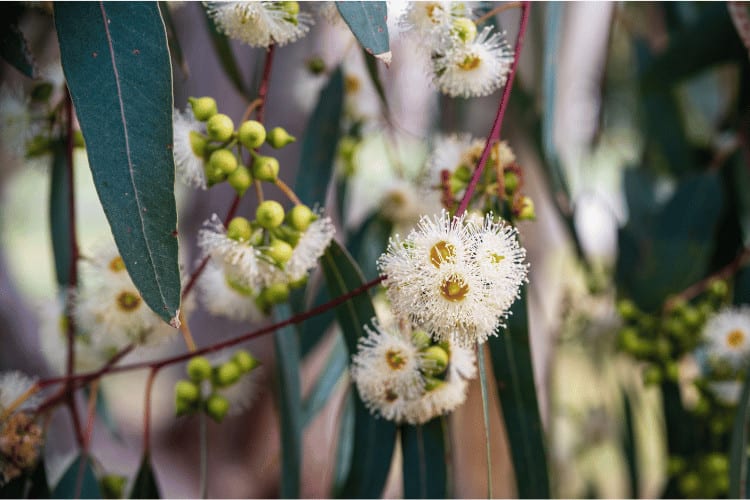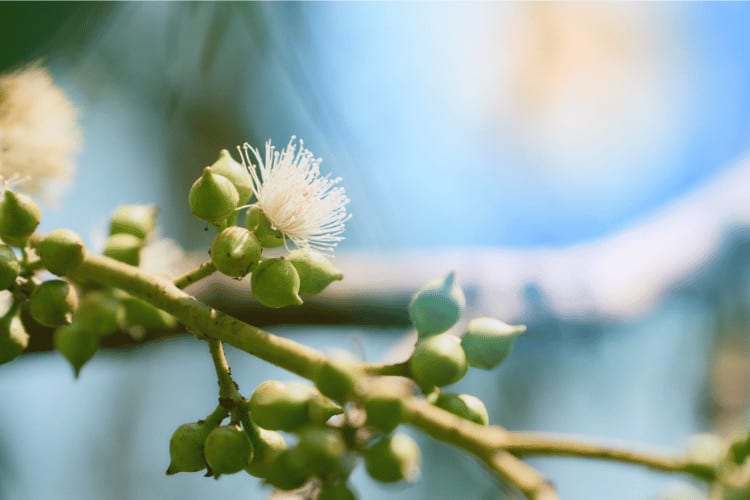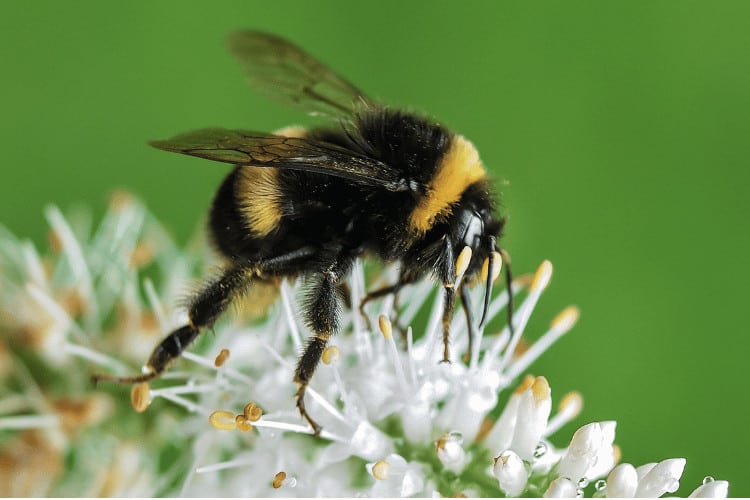Do Bees Like Eucalyptus? Exploring the Bee-Eucalyptus Relationship in Beekeeping
Bees are tiny, remarkable creatures that hold profound importance in our world. As pollinators, they sustain the ecosystem and drive agricultural productivity.
Yet, as the seasons change, the food supply, like fruit trees, becomes a little scarce. There are fewer plants in bloom, which will make bee foraging a little tricky.
Thankfully, there are a few plant species that can flower at different times of the year. A great example of that is the eucalyptus trees.
But do bees like eucalyptus? Let’s find out.
Are Eucalyptus Trees a Good Source of Pollen for Bees?

When bees meet eucalyptus plants, it’s like love at first sight. These are native plants that grow in several parts of the world. That includes South Africa and Australia.
Eucalyptus trees stand out in their bright and beautiful colors. Imagine pretty shades of white, cream, red, and soft pink against a green background.
These hues act like a sign saying, “Hey bees, come over here!”
Moving on, bees, those hard-working gatherers, are excellent at spotting these bright colors. They rush to the eucalyptus and drink sweet nectar from flowers.
This is their energy source, giving them the power to buzz around and help flowers grow.
Plus, the flowers also produce a lot of pollen. Honey bees really like collecting this eucalyptus pollen, since they use it to feed their brood back in their hives.
And guess what? When bees collect nectar from eucalyptus flowers, they make a special kind of honey, with a distinct flavor. It’s called eucalyptus honey.
This tastes different, kind of like herbs, and a bit minty.
So, bees and eucalyptus are like best buddies, helping each other out. But there’s even more to this story. Let’s dive deeper and see how beekeepers can use eucalyptus to make their bee homes better.
What Are the Benefits and Drawbacks of Using Eucalyptus in Apiary Practices?
Using eucalyptus in beekeeping can be a great idea. Yet, it’s important to know both the good and the bad aspects of the plant.
The Good: Eucalyptus Benefits
Eucalyptus has some cool tricks up its leaves that can help beekeepers. First up, bees love making honey from eucalyptus nectar.
To the flying critters, this honey is like a special treat with a unique flavor.
Besides that, eucalyptus oil, which comes from the leaves, has a superpower. It has antimicrobial properties and can fight off germs.
This can help keep bee homes clean and healthy. It’s like a natural cleaning agent for the buzzing critters!
Also, different species of eucalyptus bloom at various times throughout the year. Because of that, these plants can provide food for bees over an extended period.

The Bad: Eucalyptus Challenges
While eucalyptus has many benefits, it still has its fair share of issues. For starters, it has lots of oil.
While this is good for fighting germs, it can also make honey extraction a bit tricky. The oil can solidify and make it hard to remove the honey from the combs. Beekeepers may need to use special techniques to extract honey from eucalyptus hives.
Another thing is that when bees really like eucalyptus, they may spend more time there. Because of that, they’ll forget about other flowers.
This could be a bit of a problem since bees need a balanced diet, just like we do. So, as beekeepers, we have to make sure our bee buddies still visit other flowers, too.
You see, eucalyptus is like a helpful friend, but sometimes it brings along challenges.
Can Bees Use Eucalyptus for Nesting?
Now that we’ve seen both sides of the eucalyptus story, let’s find out how bees use this tree for more than just food. They’ve got some clever nesting plans too!
Eucalyptus isn’t just about food for bees; it’s like a cozy home address for some of these buzzers. The plant can provide excellent shelter from the elements.
That’s why carpenter bees make their nests out of eucalyptus wood. It’s a durable material that can offer a lot of support to the nest sites.
Because of that, eucalyptus wood is like a luxury apartment for the buzzing critters. They carve out cozy nests in this sturdy wood, protecting their brood and creating safe spaces.
It’s like bee architecture in action!
Moving on, the wood isn’t the only usable part of the plant. Some bumblebees use eucalyptus leaves to build their homes.
The foliage helps turn their nests into comfy and snug spaces, just like a warm hug.
Moving on, the plant also adds a special touch. The strong scent of eucalyptus may keep bumblebee homes safe from harmful invaders. It’s like having a natural guardian for their nest.
That’s because the plants can repel insects like mosquitoes.
So, you see, eucalyptus isn’t just a food stop for bees. It’s a home, a shelter, and even a guardian for some bee species.

How to Use Eucalyptus in Apiary Practices?
First up, you have to consider the placement of the plants. Positioning these trees near your beekeeping spot can be a smart move.
Bees will have a shorter flight to reach these tasty flowers, saving their energy for other important tasks.
Other than that, eucalyptus oil can be incredibly helpful. You can use it to keep your bee homes clean and cozy.
Add a little to a spray bottle and sprinkle it around the bee hives. You can also simply place a few drops of the oil in the colony.
Although, with a spray bottle, you’ll have a lot more control.
Yet, you have to remember, a little goes a long way. Too much oil might give your bees a messy surprise!
Finally, don’t forget that bees need a balanced diet. So, you should add a few other flower types into the meal mix.
Wrapping Up
Do bees like eucalyptus? The simple answer to this question is yes.
That’s because of a few reasons. For starters, eucalyptus is an amazing source of nectar and pollen for bees. On top of that, eucalyptus is an effective repellent. It can keep mosquitos away.
Finally, bees can use eucalyptus as shelter from various elements.
